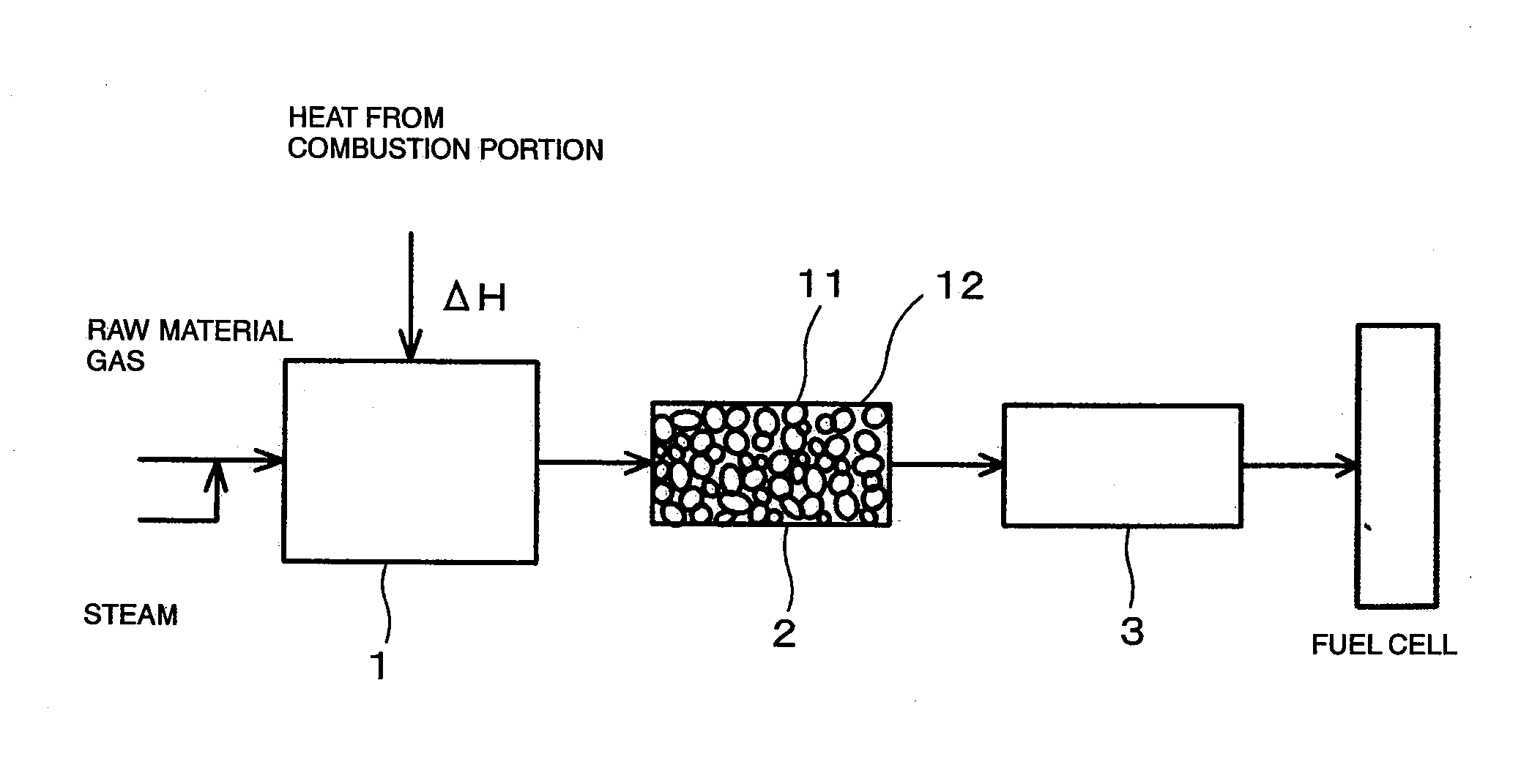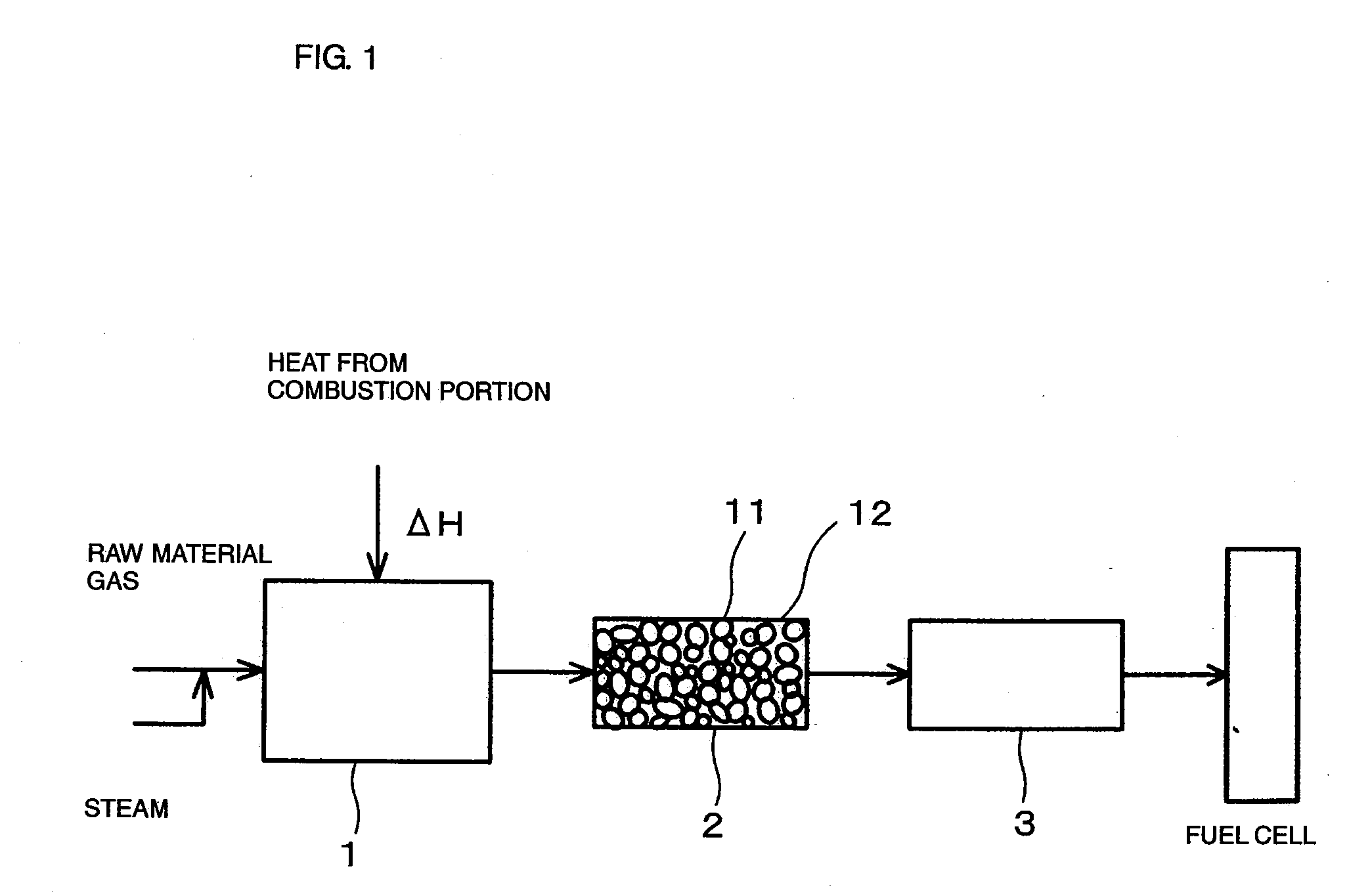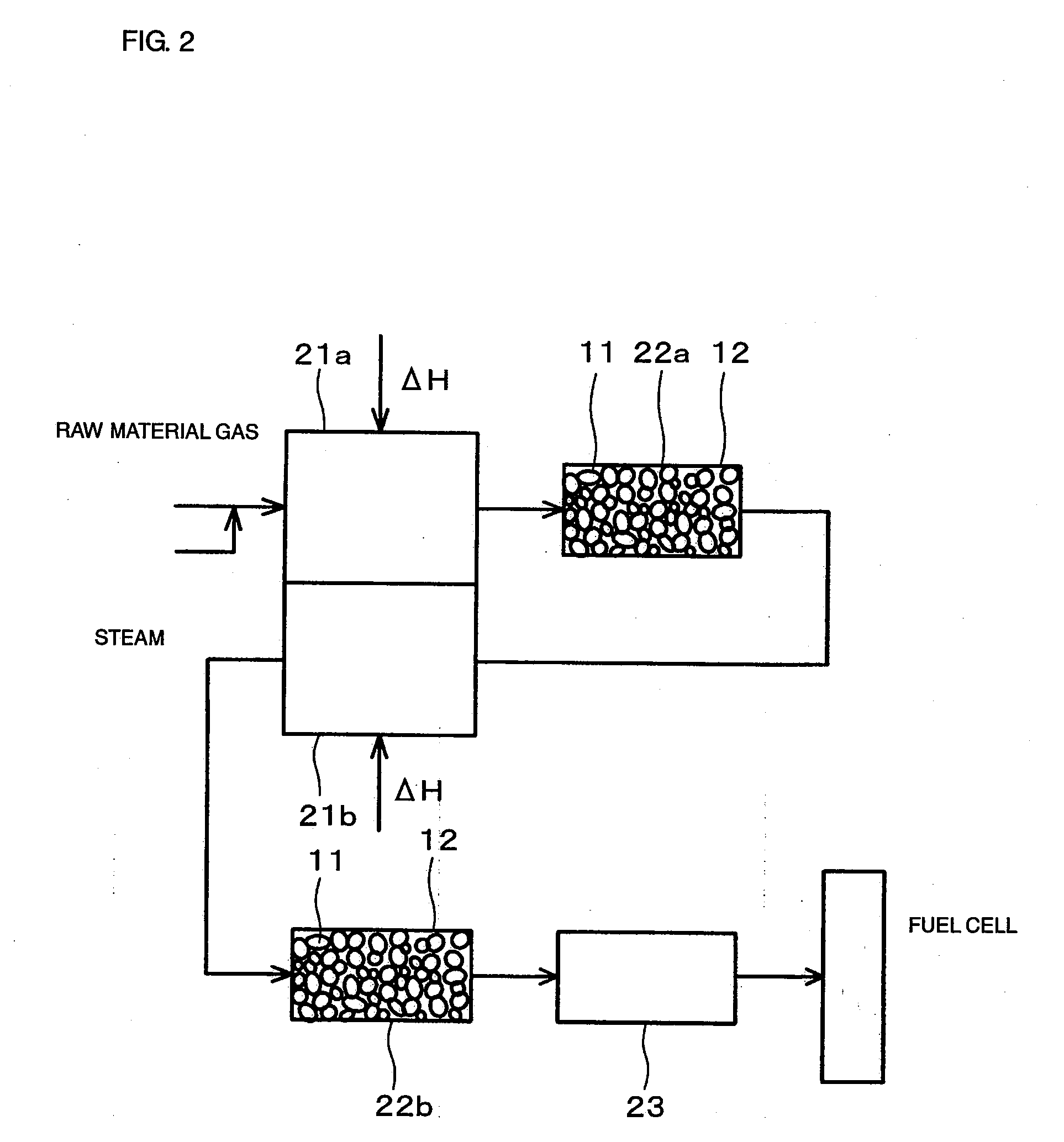Reforming apparatus for fuel cells
a fuel cell and apparatus technology, applied in the direction of liquid-gas reaction of thin-film type, gas-gas reaction process, separation process, etc., can solve the problems of difficult to absorb carbon dioxide gas at a high temperature, degrade battery function, and electrode poisoning, so as to improve the hydrogen conversion rate , the effect of saving equipment cost and spa
- Summary
- Abstract
- Description
- Claims
- Application Information
AI Technical Summary
Benefits of technology
Problems solved by technology
Method used
Image
Examples
example 1
[0070]FIG. 1 is a drawing showing the constitution of a hydrogen producing apparatus for fuel cells (reforming apparatus for fuel cells) according to an embodiment of the present invention.
[0071] As shown in FIG. 1, the reforming apparatus for fuel cells includes a reformer 1 for steam-reforming a raw material gas (in this example, CH4) to produce hydrogen, a carbon dioxide removing apparatus 2 for absorbing and removing carbon dioxide gas generated from the reformed gas at a high temperature, which is produced by reforming in the reformer 1, and a CO converter 3 for removing carbon monoxide (CO) in the reformed gas after removal of the carbon dioxide.
[0072] The reformer 1 uses a Ni-based catalyst as a reforming catalyst and is adapted for steam reforming using heat generated by burning a combustion gas in a combustion portion. Since a sulfur compound is harmful to the reforming catalyst, a raw material gas is introduced into the reformer 1 after being passed through a desulfurize...
example 2
[0089] The same raw material gas (hydrocarbon (CH4)) as in Example 1 was steam-reformed under the same conditions as in Example 1 except that the internal temperature of the reformer 1 was set to 720° C., and then the reformed gas discharged from the reformer 1 was supplied to the carbon dioxide removing apparatus 2 for removing carbon dioxide by absorption. The temperature of the reformed gas at the inlet of the carbon dioxide removing means (carbon dioxide absorber) 2 was 700° C.
[0090] Also, the composition (concentrations of H2, CO, CO2, and hydrocarbon (CH4)) of the reformed gas was measured after passing through the carbon dioxide removing apparatus (carbon dioxide absorber) 2.
[0091] The results were as following.
[0092] (1) Composition of the reformed gas after passing through the carbon dioxide removing apparatus [0093] H2: about 93 vol % [0094] CO: 0.4 vol % [0095] CO2: 0.2 vol % [0096] Hydrocarbon (CH4): 6 vol %
example 3
[0097] The same raw material gas (hydrocarbon (CH4)) as in Example 1 was steam-reformed under the same conditions as in Example 1 except that the internal temperature of the reformer 1 was set to 700° C., and then the reformed gas discharged from the reformer 1 was supplied to the carbon dioxide removing apparatus 2 for removing carbon dioxide by absorption. The temperature of the reformed gas at the inlet of the carbon dioxide removing apparatus (carbon dioxide absorber) 2 was 661° C.
[0098] Also, the composition (concentrations of H2, CO, CO2, and hydrocarbon (CH4)) of the reformed gas was measured after passing through the carbon dioxide removing apparatus (carbon dioxide absorber) 2.
[0099] The results were as following.
[0100] (1) Composition of the reformed gas before passing through the carbon dioxide removing apparatus [0101] H2: about 67 vol % [0102] CO: 13 vol % [0103] CO2: 11 vol % [0104] Hydrocarbon (CH4): 9 vol %
[0105] (2) Composition of the reformed gas after passing ...
PUM
| Property | Measurement | Unit |
|---|---|---|
| temperature | aaaaa | aaaaa |
| temperature | aaaaa | aaaaa |
| temperature | aaaaa | aaaaa |
Abstract
Description
Claims
Application Information
 Login to View More
Login to View More - R&D
- Intellectual Property
- Life Sciences
- Materials
- Tech Scout
- Unparalleled Data Quality
- Higher Quality Content
- 60% Fewer Hallucinations
Browse by: Latest US Patents, China's latest patents, Technical Efficacy Thesaurus, Application Domain, Technology Topic, Popular Technical Reports.
© 2025 PatSnap. All rights reserved.Legal|Privacy policy|Modern Slavery Act Transparency Statement|Sitemap|About US| Contact US: help@patsnap.com



